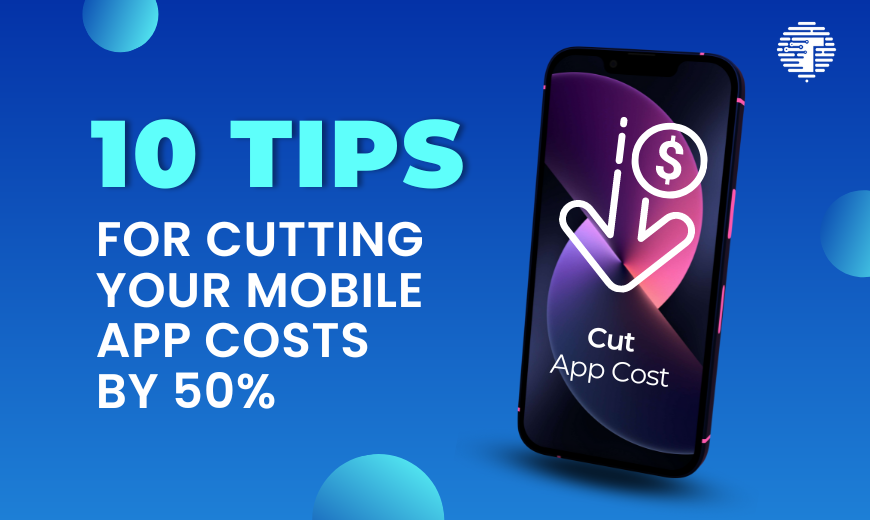Are you ready to revolutionise your business and reach new heights of customer engagement and sales? Mobile apps have long become a key component of daily life, with billions of dollars in revenue generated from the palms of our hands every year.
In 2020, global revenue from mobile apps reached an unprecedented $318 billion, up $60 billion from the previous year. Mobile games and social networking apps also lead the way. Mobile games generated over $200 billion, while social networking mobile apps made around $31 billion. The Statista Digital Market Outlook predicts the industry will continue to grow, with revenue expected to reach $613 billion by 2025.
However, the process of developing and launching a mobile app can be a challenge for many businesses and entrepreneurs. The mobile app costs can vary depending on the complexity and features involved.
For a simple app with basic functions, limited integration, and few screens, the cost can range from$ 10,000 to $40,000 USD. A mid-level app with custom UX/UI elements, cross-platform functionality, and simple third-party integrations can cost between $40,000 to $200,000 USD. On the other hand, a complex app with advanced functionality, custom features, and extensive data storage requirements can cost well over $200,000 USD and into the millions.
In this article, we’ll share 10 tips and strategies to help you cut your mobile app costs by up to 50%, without sacrificing quality or functionality. Whether you’re a startup looking to build your first app or a business seeking to expand your mobile offerings, these tips will help you create an app that stands out from the competition and makes a lasting impact on your customers.
Read more about mobile app pricing by features and complexity here.
What determines the cost of building a mobile app?

To understand how to optimize the costs of mobile app development, it’s important to first understand what factors influence the price. While each app is unique, there are several key factors that consistently impact the cost, such as:
- App development team structure & location
- App complexity
- Features and functionalities
- Platform and devices
- App design
- Post-launch expenses
Read more about key factors that affect mobile app development cost here.
10 Tips for Cutting Your Mobile Application Costs By 50%

It’s time to explore ways to optimise these costs. While there’s no one-size-fits-all solution, the following tips can serve as a helpful starting point.
1. Start with a clear app idea
Starting with a clear and well-defined app idea can make a huge difference in the success of your mobile app development project.
Think about it – having a clear idea of what your app should do, what features it needs, who your target audience is, and what kind of user experience you want to provide will allow your development team to work more efficiently and effectively. You can eliminate unnecessary features and functionality, streamline development, and avoid costly changes and revisions later on.
Therefore, investing time and effort in defining your app idea upfront can save you a lot of trouble down the line and increase the chances of success.
2. Optimise design for simplicity
Simplifying the app design not only saves costs but can also lead to a better overall experience and higher return on investment when it comes to mobile app development.
When designs become too intricate or complex, they can require more time and resources from the development team, leading to higher costs. However, a straightforward design can be developed faster and with fewer resources, which means a significant reduction in cost.
In addition to saving money, a simple and user-friendly design can improve the user experience. Users can quickly navigate the app and find the features they need, leading to higher user satisfaction and engagement.
3. Research thoroughly
In the fast-paced world of mobile apps, it’s not just about creating something that works. It’s about creating something that stands out in a sea of competitors. .
That’s why strong market research is absolutely crucial before launching any app. By diving deep into consumer behavior, preferences, and needs, businesses can gain valuable insights that inform everything from the app’s design to its marketing strategy.
After all, you can also identify gaps in the market and potential competitors to develop a unique value proposition that sets the app apart from competitors and appeals to the target audience.
4. Consider outsourcing
Outsourcing an experienced development team can be a game-changer for mobile app development. It’s a smart way to keep costs down while working with a team that has the expertise and skill set to deliver the project within the agreed-upon timeline.
On the other hand, hiring an in-house development team can be expensive due to salaries, benefits, and other overhead costs. Generally, you need more developers to build an app than to support it, so you can end up with a full time team much larger than you need once you’re ready for launch!
With outsourcing, businesses can benefit from a pool of talented and experienced developers who work efficiently and cost-effectively. This approach allows for high-quality mobile apps to be delivered within the deadline, freeing up time, resources, and budget for other important areas of the business.
If you are looking for an experienced development partner to help you create your beautiful mobile app, you can build your perfect team with us.
5. Choose the right platform

Choosing between Native and Hybrid app development is an important decision that can impact the cost of mobile app development.
Native apps are designed for one specific platform, like iOS or Android, while Hybrid apps can run on multiple platforms.
If your app requires advanced features or heavy processing, Native app development may be the better choice as it provides the best performance and user experience. On the other hand, if your app is simpler and needs to run on multiple platforms, Hybrid app development could be more cost-effective and a good option for you to test your MVP to launch your app to the market faster.
To make the right decision, it’s important to work with experienced developers who can help you choose the best option for your unique needs and goals.
Read our article about comparison between Native app Vs. Hybrid App here.
6. Create requirement analysis
One effective way to help cut mobile app cost is creating requirement analysis. It ensures
a clear plan by creating a detailed requirements analysis document. This document breaks down the product into smaller, manageable components that can help with wireframing, design, and development without making any assumptions.
If you don’t have the skills or knowledge to create this document yourself, you can have a development team create it for you before settling on the project pricing.
7. Have a clear scope
According to the Standish Group, around 70% of large software projects fail to deliver the expected value on time and within budget.
Moreover, the costs of development escalate when founders start building the app with high-level requirements without a clear and detailed plan.
Having a solid plan is crucial when developing a mobile app. It’s important to define every aspect of the app’s functionality and features during the planning stage, in order to avoid costly changes during development and project failures.
Read our article to find more in-depth details on how to avoid your software project from failure: https://www.trienpont.com/why-do-over-70-of-software-projects-fail/
8. Validate your idea with an MVP
Validating an idea with a Minimum Viable Product (MVP) is a smart approach for reducing costs and minimizing risks associated with mobile app development.
An MVP is a basic version of the full app that includes only its essential features. By releasing an MVP, you can test the waters and gauge user interest and feedback before committing significant resources and funding to a full-fledged app.
This approach can result in significant cost savings and helps avoid sunk costs if the idea turns out to be unsuccessful.
Apart from reducing the app cost, there are some more benefits of building an MVP:
- Faster time-to-market;
- Better product-market fit;
- Reduce risk;
- Valuable insight.
9. Test early and often during the development process
Early testing helps reduce costs by identifying and detecting bugs and other issues in the app’s design and functionality before they become major problems, making it easier and less expensive to fix them at the development stage rather than in the later stages or after release.
Moreover, Early testing identifies technical debt, which is the cost of rework arising from suboptimal technical decisions made during development.
Here are some other benefits of testing early and often during the mobile app development process:
- Improving the quality of the app;
- Reducing the likelihood of negative user experiences;
- Ensuring that the app meets the expectations of end-users.
10. Use agile development methodologies

Agile development methodologies are an effective way to reduce costs in mobile app development. By breaking the development process into small, manageable chunks, agile allows for more flexibility and adaptability throughout the project.
This means that changes and adjustments can be made early on, rather than waiting until the end of the project when they could be more costly to fix.
All in all, agile can also help to streamline the development process, increase efficiency, and promote collaboration and communication between team members.
What’s next?
Developing a high-quality mobile app that meets your target audience’s needs doesn’t have to come at a high cost. By adopting the right strategy and approach, you can create an app that offers exceptional functionality and user experience, all while staying within your budget.
At Trienpont International, we have a team of experienced developers who can help you build high-quality, cost-effective mobile apps that meet your business needs. Whether you need a native or hybrid app, our team is equipped with the latest tools and technologies to deliver the best results.





